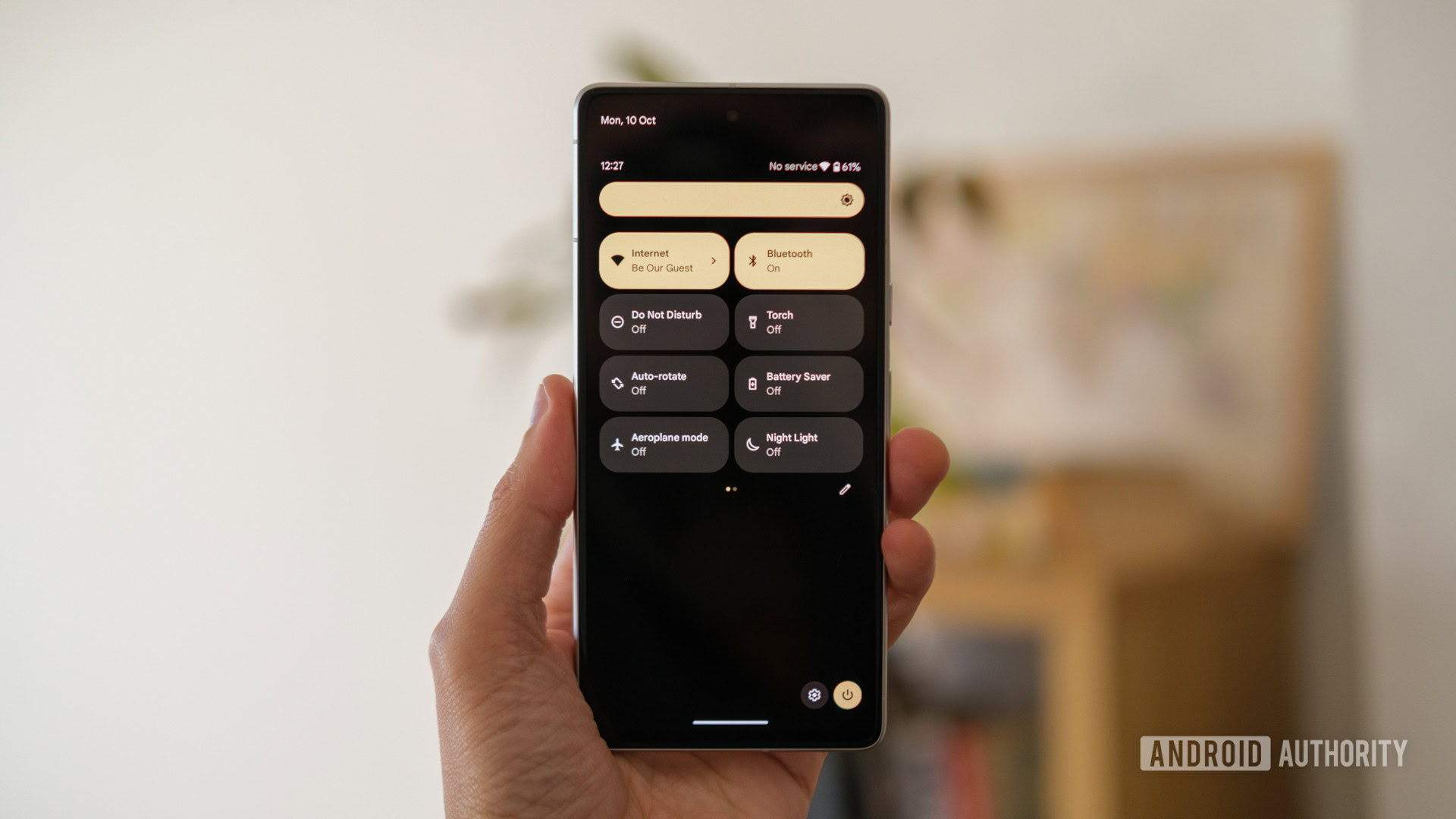Affiliate links on Android Authority may earn us a commission. Learn more.
Here's how to change your Android system accent color
Published onMay 8, 2024
The release of Android 10 in 2019 included, among other things, a system-wide dark mode theme for the first time in the operating system’s history. However, that’s not all. You could also change the Android system accent color for the first time. This feature is still available and ready to use, even with newer devices running Android 14.
Android 10 requires going into the more advanced Developer Options to change the accent colors of your Android icons to several choices. The process is more straightforward since Android 12, as newer builds require no Developer Options steps. We’ll tell you how to do both.
QUICK ANSWER
Android system accent colors can be changed by going to Settings > Wallpaper & style > Basic colors and picking your favorite color. You can also go to Wallpaper colors to let Android pick the colors based on your wallpaper.
JUMP TO KEY SECTIONS
What Android system accent colors are available?
When you enable this option, you will have eight colors to choose from if you’re running Android 10.
- Device default (blue)
- Cinnamon
- Black
- Green
- Ocean (a different shade of blue)
- Space
- Orchid
- Purple
Remember that all these colors have been expanded and changed with Android 12 and Android 13. These are no longer labeled, so we can no longer name them anymore. There are more available colors now, though. There are different hues of blue, green, purple, orange, yellow, and even color combinations.
How to change the system colors on Android 10 and 11

It takes a bit more effort than usual, but here’s how to go into the OS to change the Android 10 or Android 11 system accent color.
How to change the system colors in Android 10 and 11
- Open the Settings app on your phone.
- Scroll down and select About phone.
- Tap on the Build number seven times. This action will prompt a message declaring you as an official “Developer.”
- Return to the main Settings menu.
- Navigate to the System option. Note that the location may vary depending on your device; some devices place it within the About phone section.
- Within the System settings, find and select Developer options.
- Scroll down and locate the Accent color section.
- You’ll find a variety of styles with different colors. Choose the one you prefer by tapping on it to enable the change in accent color.
Note: These steps were assembled using a ZTE Blade X1 running Android 10. Keep in mind steps might differ depending on your hardware and software.
How to turn off Developer mode
If you’re done changing the color and want to go back to the regular User mode from Developer mode, remember that having Developer mode on won’t harm your device. But, just in case you’re worried about accidentally doing something you’re not familiar with on your phone, it’s a good idea to switch back to User mode.
- In the Settings app, locate the System option. Note that the location may vary depending on your device; on some devices, it is found within the About phone section.
- Select Developer options.
- Toggle the switch off to disable Developer mode. All the options, including the Developer options section, will disappear shortly.
How to change the system colors on Android 12 or higher

Android 12 brought a whole design facelift to the mobile operating system. One of the many changes includes the ability to change the user interface colors without going into Developer Options. We also have much fewer options in terms of colors, though. These include blue, green, purple, and orange — all in pastel shades. More colors are available in Android 13 and Android 14.
How to change UI colors in Android 12 or higher
- Open the Settings app on your phone.
- Go to Wallpaper & style.
- You have two main options. You can let Android pick the system colors based on the wallpaper. To do this, go to Wallpaper colors and choose the selection Android made for you.
- If you want to pick a specific color, go into Basic colors.
- Pick your favorite color.
- Android will change the theme colors after a second or two.
Note: These steps were put together using a Google Pixel 7 running Android 13. Keep in mind steps might differ depending on your hardware and software.
FAQs
You can usually alter the way the UI looks, and some manufacturers offer more freedom than others. In fact, stock Android 12 and 13 have the Themed icons option in the Wallpaper & style section. It is still in beta, but seems to work very well with Google apps. Regardless, you can always opt for a third-party launcher. These offer much more freedom in customizing the way everything looks.
You can follow the same steps to change the Android UI’s color to its default one. If you’re using Android 12 or 13, go into Settings > Wallpapers & style > Basic, and select blue.
You probably noticed this setting on the Wallpapers & style page. The Dark theme turns the general colors of the Android UI black or gray. This is easier on the eyes and usually offers more comfort for those who will be staring at their screens a lot, especially in the dark. Did you ever get blinded by a white screen? The Dark theme helps avoid that.
Do you need more help changing your Android phone’s look? Look at our list of the best wallpapers from all the most popular phones. You can also take things a step further with a customization app.